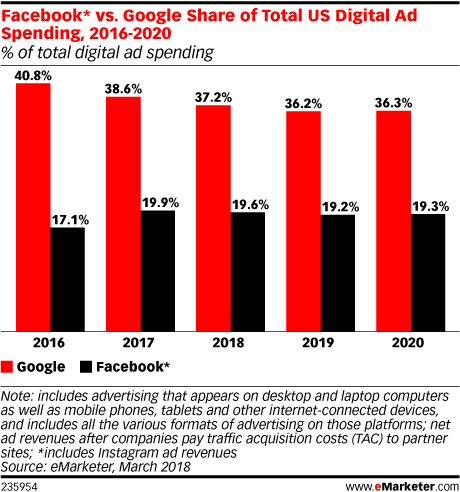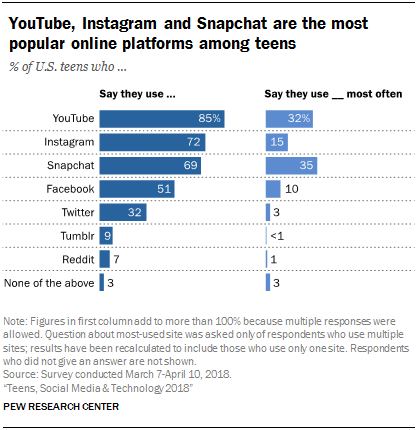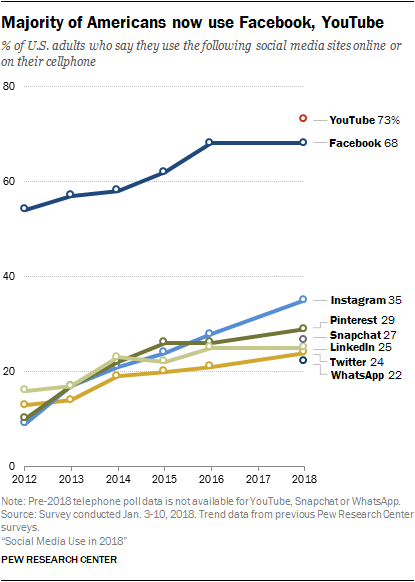We’ve witnessed some epic battles of customer choice over the years — Pepsi vs. Coca-Cola, Mac vs. PC, left Twix vs. right Twix. However, the latest competition is a rather unlikely one: Instagram vs. YouTube.
This month, Instagram announced the launch of IGTV, which offers greater video functionality and an increased time limit of up to 10 minutes for most users. It will also turn up the competitive heat on YouTube.
When Facebook purchased Instagram for $1 billion in 2012, the social media platform was known for providing filters that make user photos stand out. YouTube, which was purchased by Google six years before, started out as a destination for home videos as VCRs died and DVDs began their decline.
Today, both companies contribute to an advertising duopoly whose members are their parent companies. And Facebook has spent a considerable amount of time playing David to Google’s Goliath.
But the battle is just beginning.
Instagram Goes Video First
Based on reports, Facebook’s latest move is to focus Instagram on video content. For years, Instagram has tweaked how it lets users add video to the platform, and this investment in IGTV appears to be a way to grow its audience while also increasing engagement. Some accounts may be allotted up to an hour for their videos, while the 10-minute limit stands for most users. Kevin Systrom, Instagram CEO, expects there to be no time limits eventually.
A recent survey showed that Instagram lags behind YouTube as the destination for U.S. teenagers. However, a wider library of content on Instagram — and the longer video time limit — would be an aggressive step toward closing that gap.
Video Paves Way for Revenue
Giving users the ability to create longer videos has the potential to serve another goal: advertising. Instagram appears to be taking a page from the Facebook playbook, which incorporates a mix of news feed, messenger, video, and ads to give brands the ability to experiment with formats. At the end of 2017, Instagram rolled out Shoppable Posts, which enable ecommerce brands to drive sales through the platform. Earlier in the year it enabled ads to run within Instagram stories.
Instagram’s History With Competitors
Considering Instagram’s history, it’s not surprising that it’s looking to take on YouTube. In 2013, Instagram rolled out the ability for users to post up to 15 seconds of video. The feature launched just five months after Twitter rolled out the now-defunct Vine.
In 2016, Instagram extended the video limit from 15 seconds to 60 seconds, citing an increase in video consumption on the platform. In the six months prior to the update, video watching had increased by 40%. This was one of many changes Instagram announced in an attempt to keep rival platform Snapchat at bay. Other moves:
- August 2016: Instagram launched Instagram Stories, its take on Snapchat Stories. Both allowed users to upload a combination of images and video, which lived for 24 hours.
- November 2016: Instagram launched disappearing messages, one of Snapchat’s hallmark features.
- May 2017: Instagram launched Face Filters to compete with Snapchat’s Lenses feature.
The result? Instagram’s hard work paid off. According to Wired: “Instagram Stories became a massive success. Just two months after its launch, it had 100 million daily active users, a number that doubled to 200 million by April 2017 and 250 million by June 2017, figures that dwarfed Snapchat’s 166 million daily active users.”
The Quest for Platform Dominance
When you look at stock prices, Instagram’s dominance over Snapchat is evident. As more users and advertisers flock to Facebook, its stock has steadily increased. Conversely, Snapchat has languished at a price well below its original IPO.
However, YouTube presents a challenge that Instagram hasn’t previously faced. YouTube is currently the most widely used social media site online. This means Instagram has to find ways to convince users to think of Instagram as the social media platform — instead of an ancillary social media platform. IGTV is another step toward that mission.




